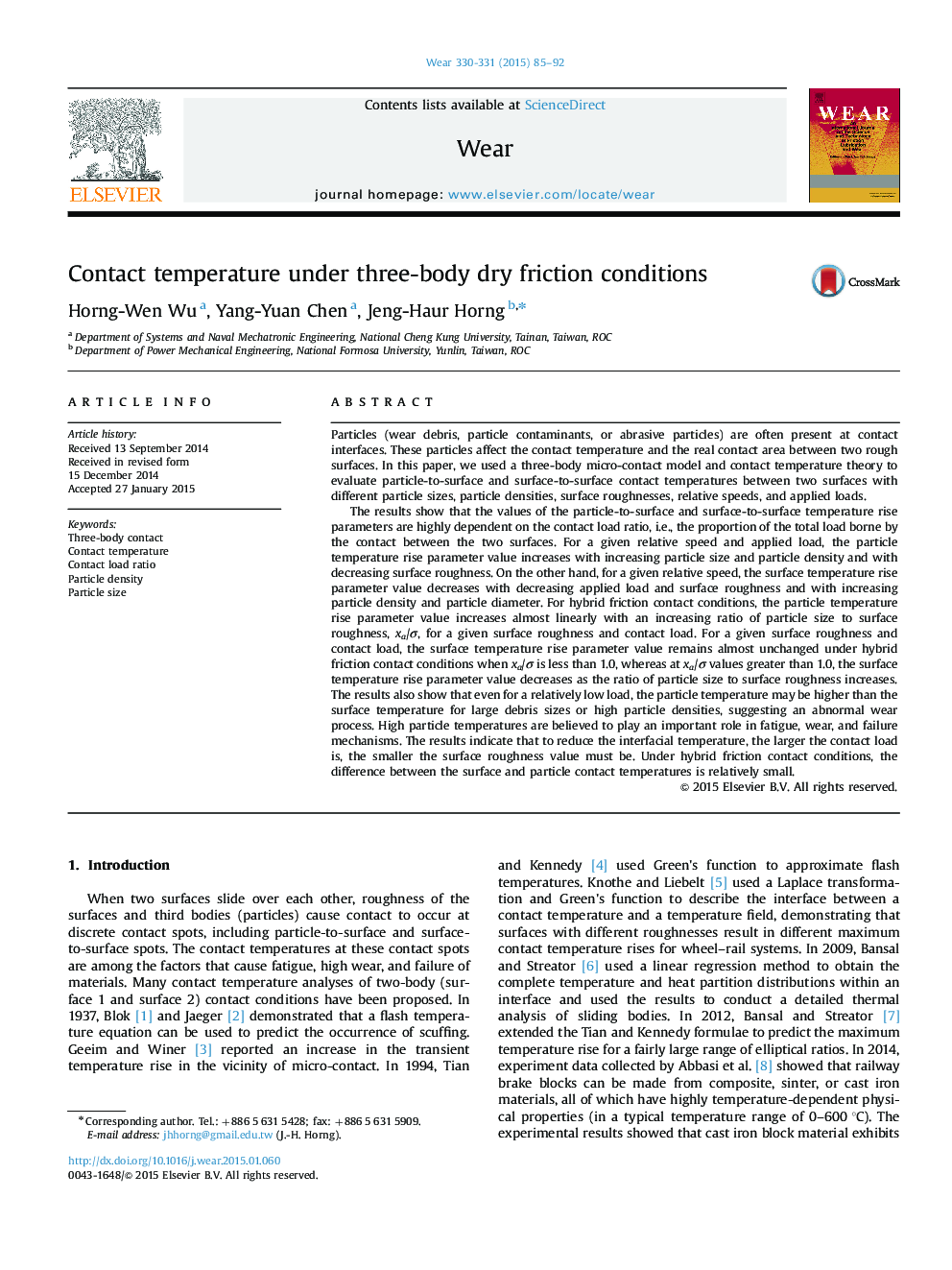| کد مقاله | کد نشریه | سال انتشار | مقاله انگلیسی | نسخه تمام متن |
|---|---|---|---|---|
| 7004283 | 1454976 | 2015 | 8 صفحه PDF | دانلود رایگان |
عنوان انگلیسی مقاله ISI
Contact temperature under three-body dry friction conditions
ترجمه فارسی عنوان
دمای تماس با شرایط اصطکاک خشک سه بدنه
دانلود مقاله + سفارش ترجمه
دانلود مقاله ISI انگلیسی
رایگان برای ایرانیان
کلمات کلیدی
تماس سه جانبه، دمای تماس نسبت بار تماس، تراکم ذرات، اندازه ذرات،
موضوعات مرتبط
مهندسی و علوم پایه
مهندسی شیمی
شیمی کلوئیدی و سطحی
چکیده انگلیسی
The results show that the values of the particle-to-surface and surface-to-surface temperature rise parameters are highly dependent on the contact load ratio, i.e., the proportion of the total load borne by the contact between the two surfaces. For a given relative speed and applied load, the particle temperature rise parameter value increases with increasing particle size and particle density and with decreasing surface roughness. On the other hand, for a given relative speed, the surface temperature rise parameter value decreases with decreasing applied load and surface roughness and with increasing particle density and particle diameter. For hybrid friction contact conditions, the particle temperature rise parameter value increases almost linearly with an increasing ratio of particle size to surface roughness, xa/Ï, for a given surface roughness and contact load. For a given surface roughness and contact load, the surface temperature rise parameter value remains almost unchanged under hybrid friction contact conditions when xa/Ï is less than 1.0, whereas at xa/Ï values greater than 1.0, the surface temperature rise parameter value decreases as the ratio of particle size to surface roughness increases. The results also show that even for a relatively low load, the particle temperature may be higher than the surface temperature for large debris sizes or high particle densities, suggesting an abnormal wear process. High particle temperatures are believed to play an important role in fatigue, wear, and failure mechanisms. The results indicate that to reduce the interfacial temperature, the larger the contact load is, the smaller the surface roughness value must be. Under hybrid friction contact conditions, the difference between the surface and particle contact temperatures is relatively small.
ناشر
Database: Elsevier - ScienceDirect (ساینس دایرکت)
Journal: Wear - Volumes 330â331, MayâJune 2015, Pages 85-92
Journal: Wear - Volumes 330â331, MayâJune 2015, Pages 85-92
نویسندگان
Horng-Wen Wu, Yang-Yuan Chen, Jeng-Haur Horng,
